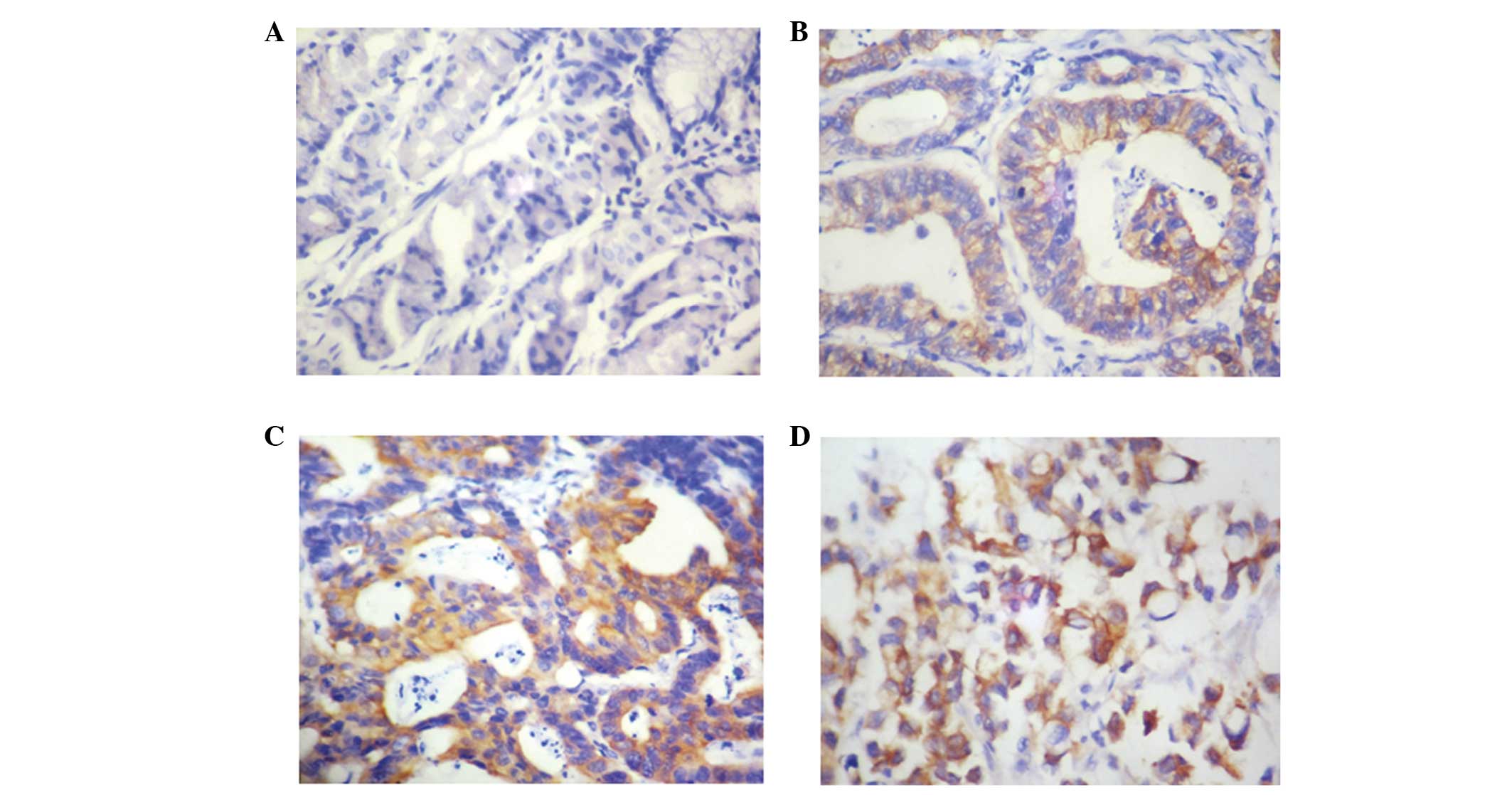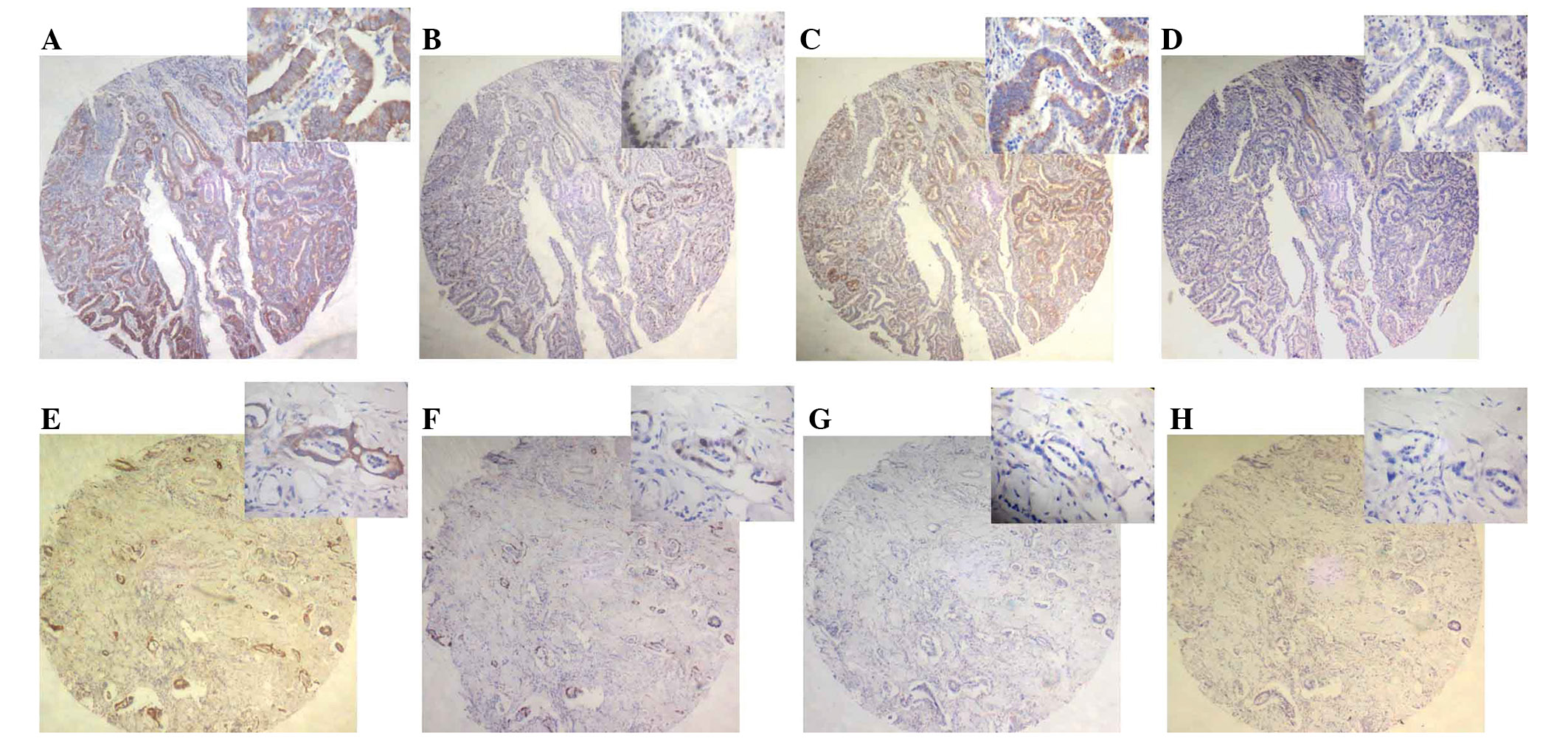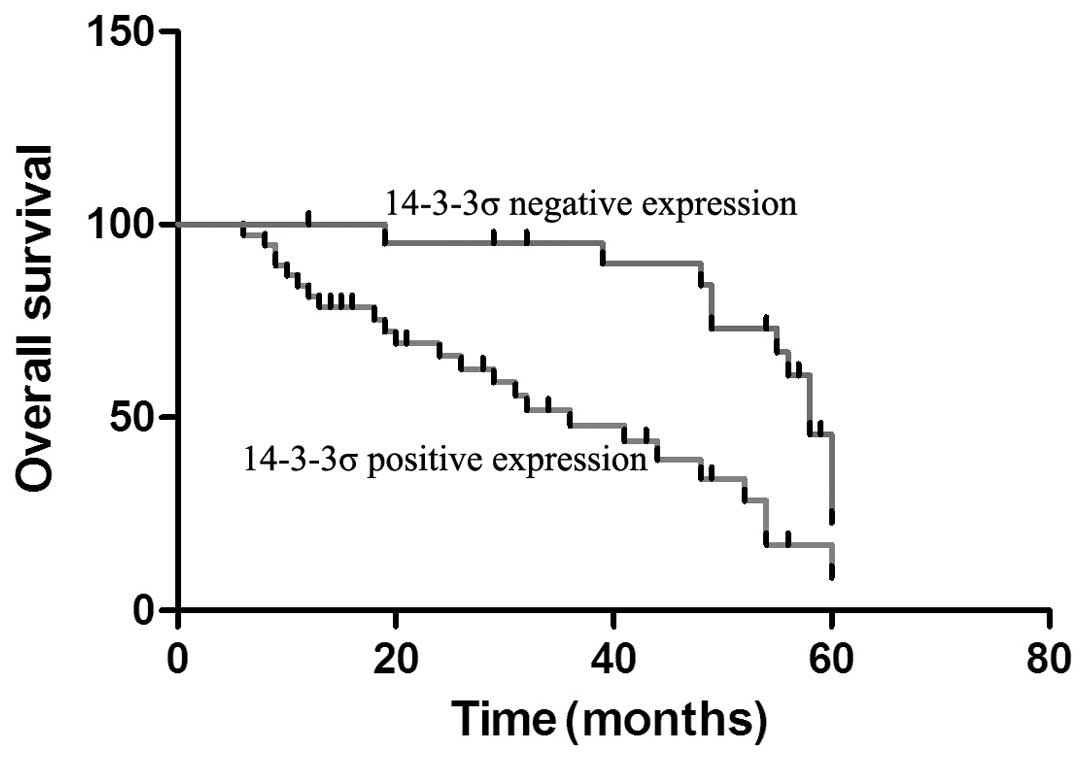|
1
|
Correa P: Human gastric carcinogenesis: a
multistep and multifactorial process - First American Cancer
Society Award Lecture on Cancer Epidemiology and Prevention. Cancer
Res. 52:6735–6740. 1992.PubMed/NCBI
|
|
2
|
Hara T, Ooi A, Kobayashi M, et al:
Amplification of c-myc, K-sam, and c-met in gastric cancers:
detection by fluorescence in situ hybridization. Lab Invest.
78:1143–1153. 1998.PubMed/NCBI
|
|
3
|
Yu J, Miehlke S, Ebert MP, et al:
Frequency of TPR-MET rearrangement in patients with gastric
carcinoma and in first-degree relatives. Cancer. 88:1801–1805.
2000. View Article : Google Scholar : PubMed/NCBI
|
|
4
|
Nakatsuru S, Yanagisawa A, Ichii S, et al:
Somatic mutation of the APC gene in gastric cancer: frequent
mutations in very well differentiated adenocarcinoma and
signet-ring cell carcinoma. Hum Mol Genet. 1:559–563. 1992.
View Article : Google Scholar : PubMed/NCBI
|
|
5
|
Kim JH, Takahashi T, Chiba I, et al:
Occurrence of p53 gene abnormalities in gastric carcinoma tumors
and cell lines. J Natl Cancer Inst. 83:938–943. 1991. View Article : Google Scholar : PubMed/NCBI
|
|
6
|
Park K, Kim SJ, Bang YJ, et al: Genetic
changes in the transforming growth factor beta (TGF-β) type II
receptor gene in human gastric cancer cells: correlation with
sensitivity to growth inhibition by TGF-β. Proc Natl Acad Sci USA.
91:8772–8776. 1994. View Article : Google Scholar
|
|
7
|
Xu HW, Ren F, Yu YM and Cai CZ: Runx3
expression in lymph nodes with metastasis is associated with the
outcome of gastric cancer patients. Oncol Lett. 2:1275–1279.
2011.
|
|
8
|
Lalle M, Leptourgidou F, Camerini S, et
al: Interkingdom complementation reveals structural conservation
and functional divergence of 14-3-3 proteins. PLoS One.
11:e780902013. View Article : Google Scholar
|
|
9
|
Rosenquist M, Alsterfjord M, Larsson C and
Sommarin M: Data mining the Arabidopsis genome reveals fifteen
14-3-3 genes. Expression is demonstrated for two out of five novel
genes. Plant Physiol. 127:142–149. 2001. View Article : Google Scholar : PubMed/NCBI
|
|
10
|
Chan TA, Hermeking H, Lengauer C, et al:
14-3-3σ is required to prevent mitotic catastrophe after DNA
damage. Nature. 401:616–620. 1999. View
Article : Google Scholar : PubMed/NCBI
|
|
11
|
Laronga C, Yang HY, Neal C and Lee MH:
Association of the cyclin-dependent kinases and 14-3-3 sigma
negatively regulates cell cycle progression. J Biol Chem.
275:23106–23112. 2000. View Article : Google Scholar : PubMed/NCBI
|
|
12
|
Xiao T, Mi W, Li M, et al: Analyzed the
molecular interaction network of tumor suppressor gene 14-3-3 sigma
in lung cancer cell based on stable isotope labeling by amino acids
in cell culture technology. Zhonghua Yu Fang Yi Xue Za Zhi.
47:752–756. 2013.(In Chinese). PubMed/NCBI
|
|
13
|
Evren S, Dermen A, Lockwood G, et al:
mTOR-RAPTOR and 14-3-3σ immunohistochemical expression in high
grade prostatic intraepithelial neoplasia and prostatic
adenocarcinomas: a tissue microarray study. J Clin Pathol.
64:683–688. 2011. View Article : Google Scholar : PubMed/NCBI
|
|
14
|
Zhang Z, Zhang G and Kong C: High
expression of Cdc25B and low expression of 14-3-3σ is associated
with the development and poor prognosis in urothelial carcinoma of
bladder. Tumour Biol. 35:2503–2512
|
|
15
|
Liu S, Howell P, Ren S, et al: The 14-3-3σ
gene promoter is methylated in both human melanocytes and melanoma.
BMC Cancer. 27:1622009. View Article : Google Scholar
|
|
16
|
Xie D, Sham JS, Zeng WF, et al:
Heterogeneous expression and association of β-catenin, p16 and
c-myc in multistage colorectal tumorigenesis and progression
detected by tissue microarray. Int J Cancer. 107:896–902. 2003.
View Article : Google Scholar : PubMed/NCBI
|
|
17
|
Ide M, Nakajima T, Asao T and Kuwano H:
Inactivation of 14-3-3σ by hypermethylation is a rare event in
colorectal cancers and its expression may correlate with cell cycle
maintenance at the invasion front. Cancer Lett. 207:241–249. 2004.
View Article : Google Scholar : PubMed/NCBI
|
|
18
|
Iwata N, Yamamoto H, Sasaki S, et al:
Frequent hypermethylation of CpG islands and loss of expression of
the 14-3-3 σ gene in human hepatocellular carcinoma. Oncogene.
19:5298–5302. 2000. View Article : Google Scholar : PubMed/NCBI
|
|
19
|
Nakamura Y, Oshima K, Naoi Y, et al:
14-3-3σ expression is associated with poor pathological complete
response to neoadjuvant chemotherapy in human breast cancers.
Breast Cancer Res Treat. 134:229–236. 2012. View Article : Google Scholar : PubMed/NCBI
|
|
20
|
Mhawech-Fauceglia P, Herrmann FR, Anderws
C, et al: 14-3-3σ expression and prognostic value in patients with
epithelial ovarian carcinoma: a high throughput tissue microarray
analysis. Eur J Surg Oncol. 35:763–767. 2009. View Article : Google Scholar
|
|
21
|
Erovic BM, Pelzmann M, Grasl MCh, et al:
Mcl-1, vascular endothelial growth factor-R2, and 14-3-3σ
expression might predict primary response against radiotherapy and
chemotherapy in patients with locally advanced squamous cell
carcinomas of the head and neck. Clin Cancer Res. 11:8632–8636.
2005. View Article : Google Scholar : PubMed/NCBI
|
|
22
|
Li Z, Dong Z, Myer D, et al: Role of
14-3-3σ in poor prognosis and in radiation and drug resistance of
human pancreatic cancers. BMC Cancer. 10:5982010. View Article : Google Scholar
|
|
23
|
Perathoner A, Pirkebner D, Brandacher G,
et al: 14-3-3σ expression is an independent prognostic parameter
for poor survival in colorectal carcinoma patients. Clin Cancer
Res. 11:3274–3279. 2005. View Article : Google Scholar : PubMed/NCBI
|
|
24
|
Guweidhi A, Kleeff J, Giese N, et al:
Enhanced expression of 14-3-3sigma in pancreatic cancer and its
role in cell cycle regulation and apoptosis. Carcinogenesis.
25:1575–1585. 2004. View Article : Google Scholar : PubMed/NCBI
|













